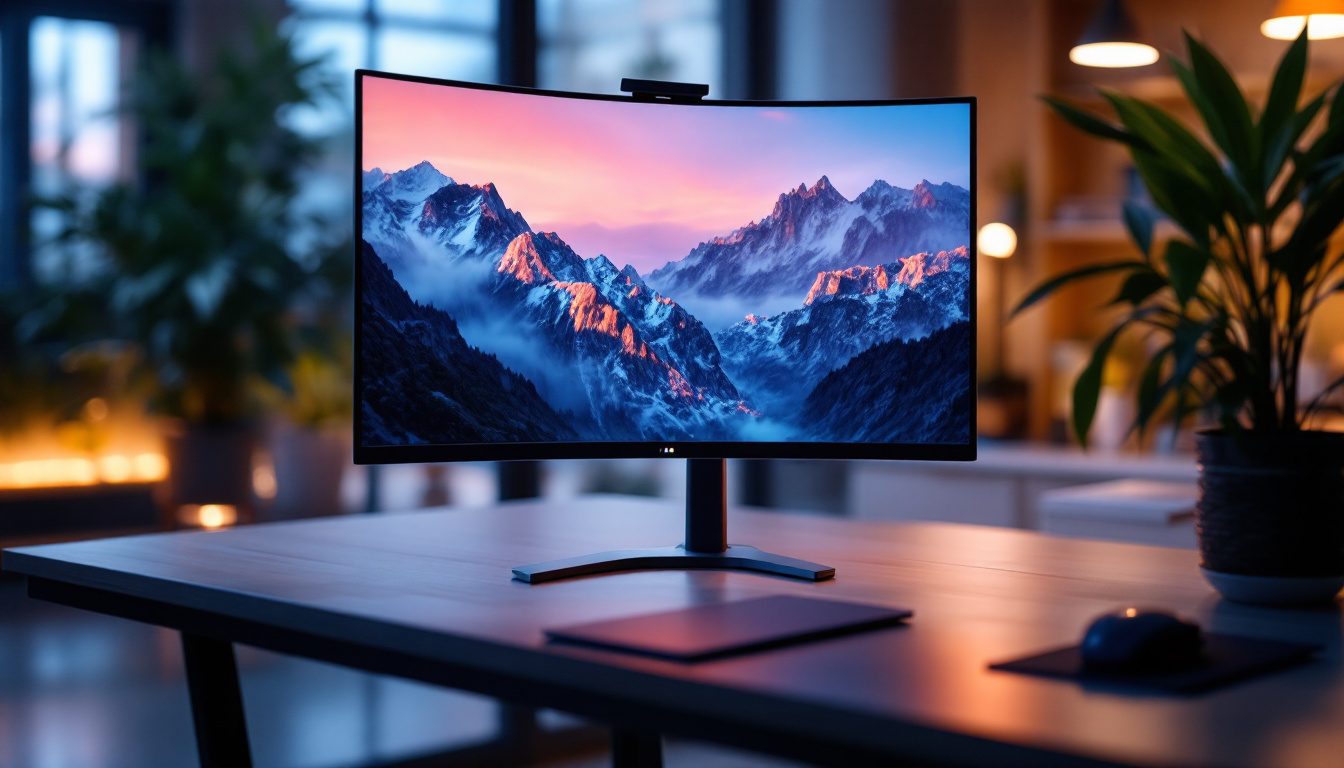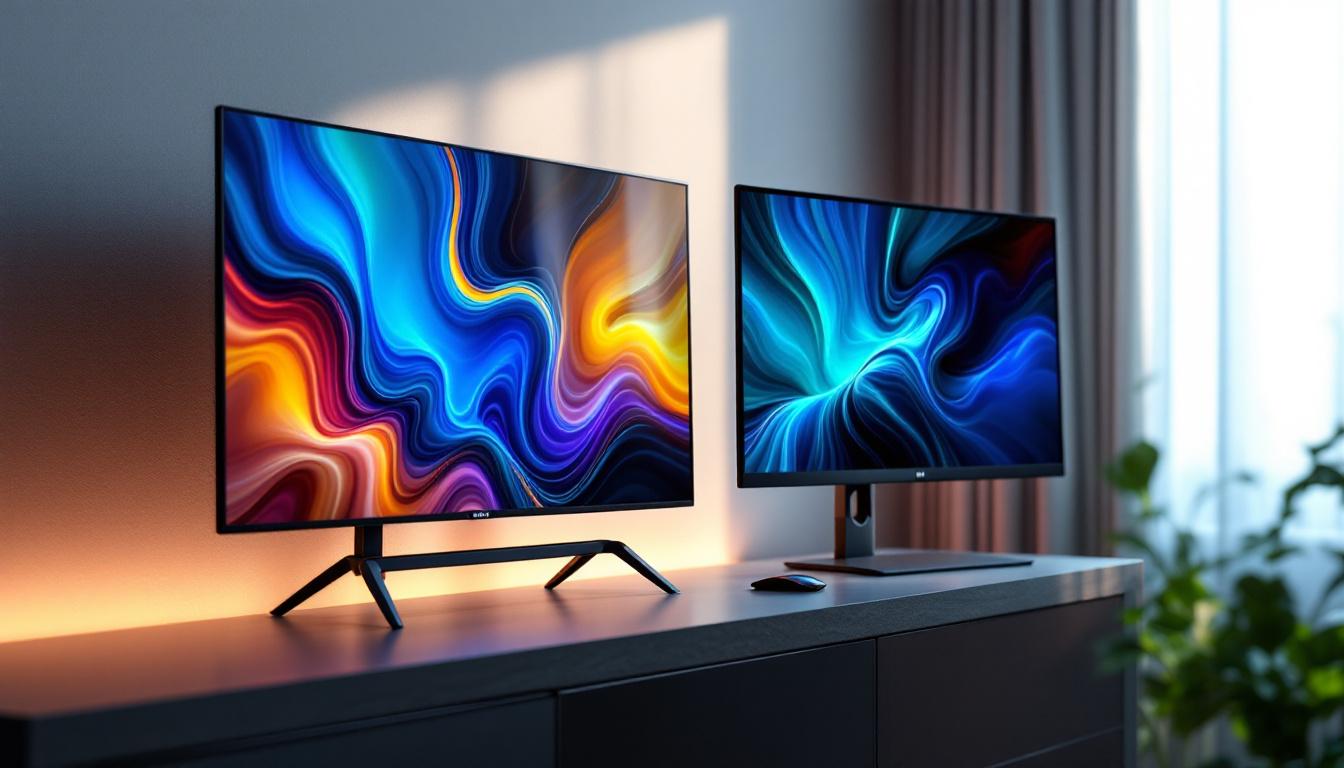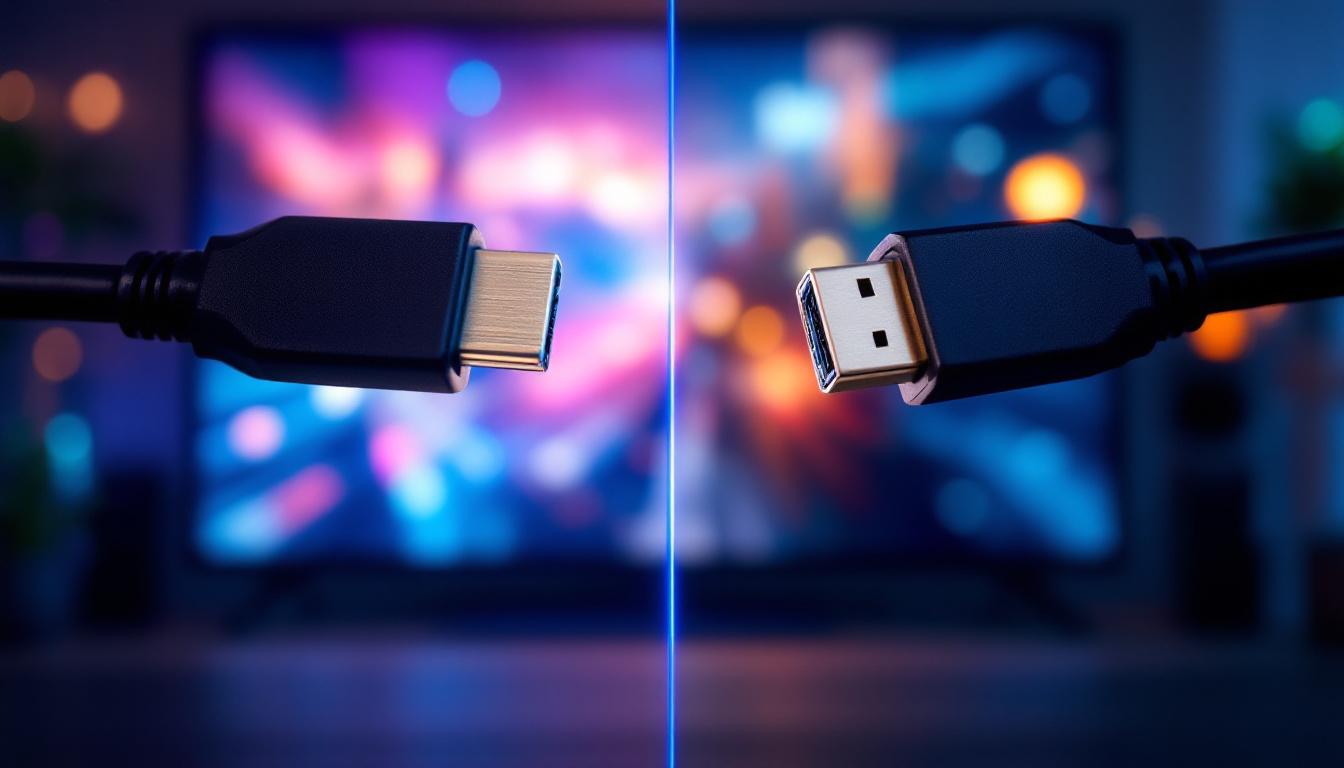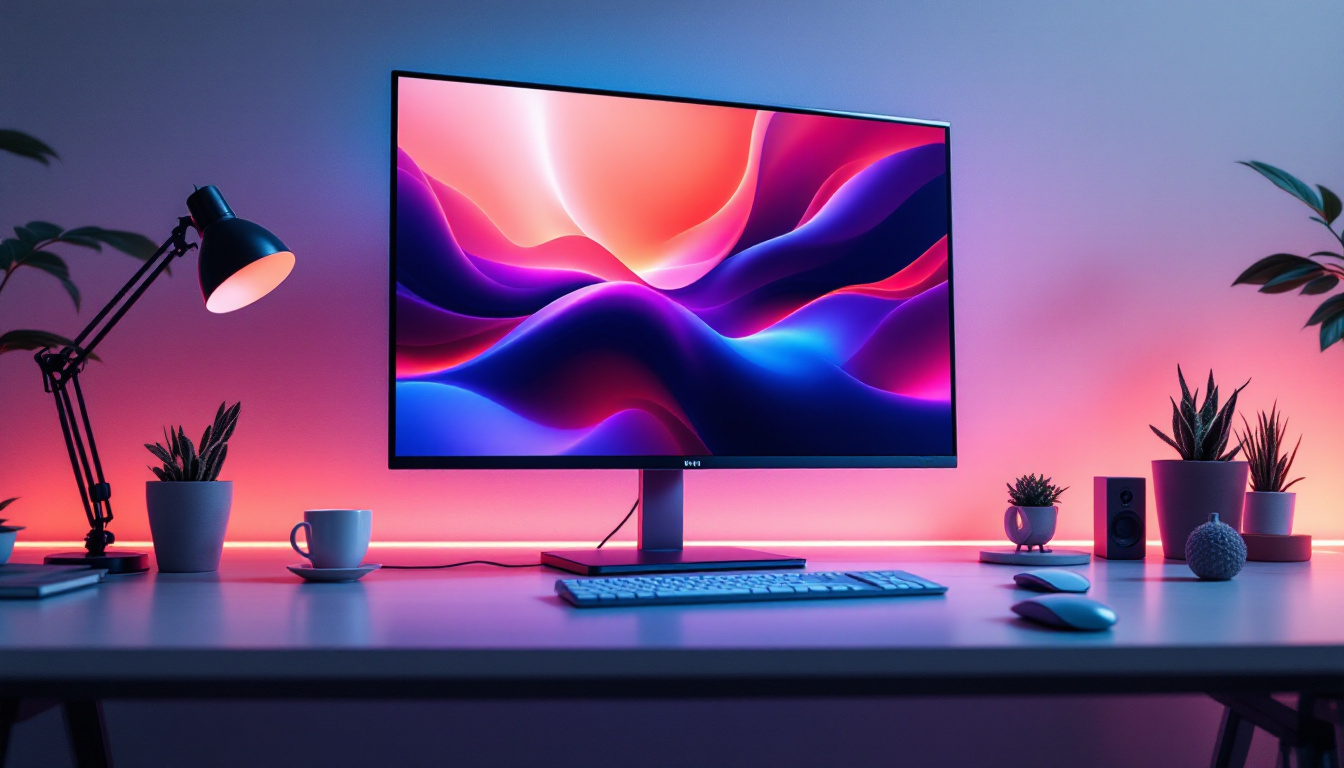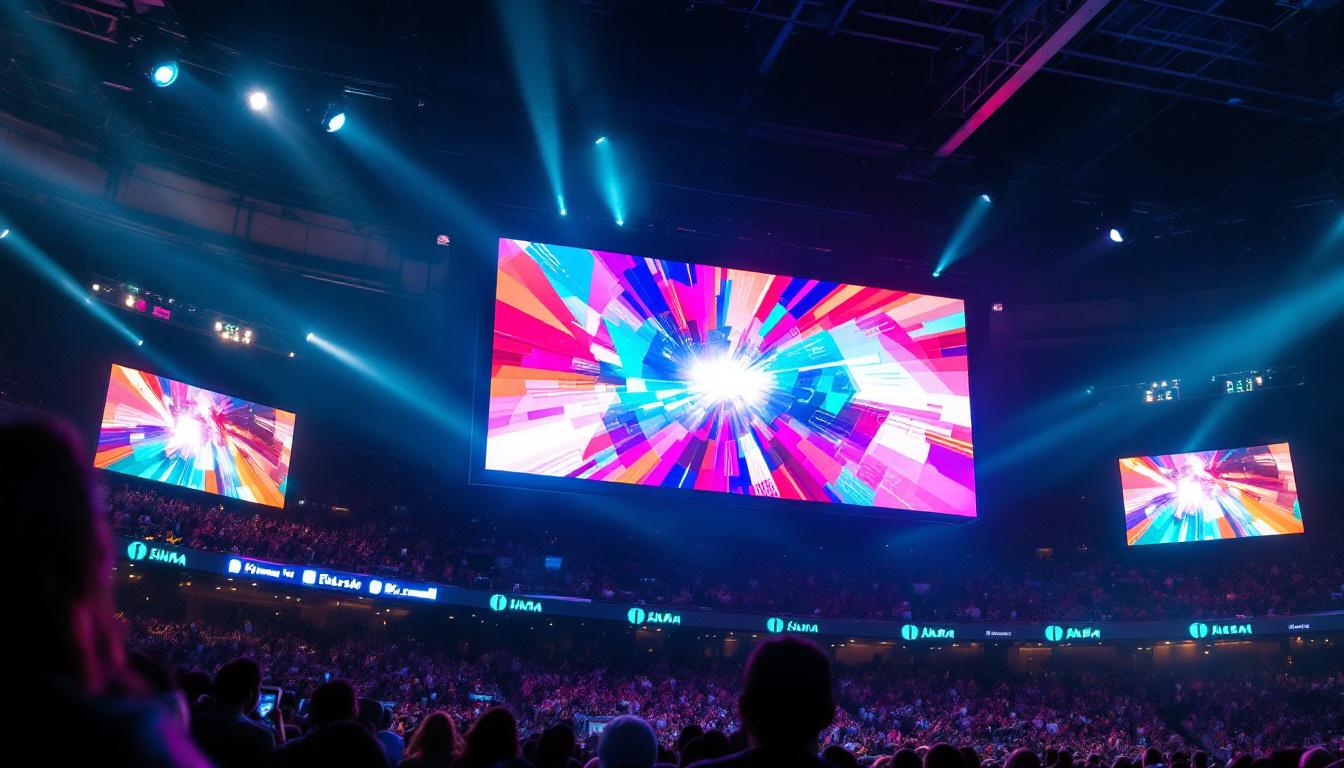Introduction to DisplayPort Technology
DisplayPort technology has revolutionized the way we connect and display content on various devices. As a digital display interface, it is widely used in computer monitors, televisions, and other multimedia devices. With the evolution of technology, different versions of DisplayPort have emerged, each offering enhanced features and capabilities. This article will delve into the differences between DisplayPort 1.4 and DisplayPort 2.1, focusing on their specifications, performance, and suitability for LED displays.
One of the standout features of DisplayPort technology is its ability to support high resolutions and refresh rates, making it an ideal choice for gamers and professionals alike. For instance, DisplayPort 1.4 can handle 8K resolution at 60Hz with HDR, providing an immersive experience for users who demand top-tier visual quality. In contrast, DisplayPort 2.1 takes this a step further by supporting up to 16K resolution at 60Hz, which is particularly advantageous for graphic designers and video editors who require exceptional detail and clarity in their work. Additionally, the increased bandwidth of DisplayPort 2.1 allows for multiple displays to be connected through a single cable, streamlining setups and reducing cable clutter.
Moreover, DisplayPort technology is not just about resolution; it also enhances audio capabilities. Both versions support multi-channel audio formats, ensuring that users enjoy high-fidelity sound alongside stunning visuals. The integration of Display Stream Compression (DSC) in DisplayPort 1.4 allows for efficient transmission of high-resolution content without compromising quality, while DisplayPort 2.1 further improves this feature, enabling lossless compression. This is particularly beneficial for content creators and gamers who require synchronized audio and video for an optimal experience. As technology continues to advance, understanding these differences becomes crucial for consumers looking to invest in the best display solutions for their needs.
Understanding DisplayPort Versions
DisplayPort has undergone significant advancements since its inception. Each version introduces improvements in bandwidth, resolution support, and additional features that cater to the growing demands of high-resolution displays and multimedia content. DisplayPort 1.4 and DisplayPort 2.1 are two critical versions that represent a leap in performance and functionality.
DisplayPort 1.4 Overview
Launched in 2016, DisplayPort 1.4 brought several enhancements over its predecessor, DisplayPort 1.3. It supports a maximum bandwidth of 32.4 Gbps, allowing for higher resolutions and refresh rates. One of the standout features of DisplayPort 1.4 is its support for Display Stream Compression (DSC), which enables the transmission of 8K video at 60 Hz with HDR (High Dynamic Range) support. This capability makes it an excellent choice for high-end gaming and professional applications. Furthermore, DisplayPort 1.4 also introduced support for Adaptive Sync technology, which helps eliminate screen tearing and stuttering during gameplay, providing a smoother and more immersive experience for gamers. This feature is particularly beneficial in fast-paced gaming scenarios where every frame counts.
DisplayPort 2.1 Overview
DisplayPort 2.1, released in 2022, marks a significant upgrade over the previous versions. With a staggering maximum bandwidth of 80 Gbps, it supports multiple high-resolution displays simultaneously. DisplayPort 2.1 is designed to handle 8K displays at 120 Hz and even 16K displays at 60 Hz, making it ideal for advanced gaming setups and professional content creation. Additionally, it includes improved support for HDR and color depth, ensuring a richer visual experience. The introduction of features like Multi-Stream Transport (MST) allows users to daisy-chain multiple monitors from a single DisplayPort output, simplifying cable management and enhancing productivity for multi-display setups. This is particularly advantageous for professionals in fields such as video editing, graphic design, and software development, where extensive screen real estate is critical for efficient workflow.
Key Specifications Comparison
When comparing DisplayPort 1.4 and DisplayPort 2.1, it is essential to examine their specifications closely. The differences in bandwidth, resolution support, and features can significantly impact user experience, especially for those using high-end displays. As technology continues to advance, understanding these specifications helps consumers make informed decisions about their hardware, ensuring compatibility and optimal performance for their specific needs.
Bandwidth and Resolution
DisplayPort 1.4 supports a maximum bandwidth of 32.4 Gbps, allowing for resolutions up to 8K at 60 Hz with DSC. In contrast, DisplayPort 2.1’s bandwidth of 80 Gbps enables it to support multiple 4K displays at 144 Hz or a single 8K display at 120 Hz without compression. This increase in bandwidth is crucial for gamers and professionals who require high refresh rates and resolutions for smooth performance. Additionally, the ability to connect multiple monitors with high fidelity is a game-changer for multitasking, allowing users to expand their workspace significantly without sacrificing image quality.
HDR and Color Depth Support
Both versions support HDR, but DisplayPort 2.1 enhances this feature by allowing for greater color depth and improved dynamic range. DisplayPort 1.4 supports up to 10-bit color depth, while DisplayPort 2.1 can handle up to 12-bit color depth. This difference is particularly relevant for content creators and photographers who need accurate color representation in their work. The expanded color gamut provided by DisplayPort 2.1 means that users can experience richer and more vibrant visuals, which is especially beneficial in fields like graphic design and video editing where color precision is paramount. Moreover, the improved dynamic range allows for deeper blacks and brighter whites, creating a more immersive viewing experience that can elevate the quality of both gaming and cinematic content.
Performance in Real-World Scenarios
Understanding how these specifications translate into real-world performance is vital for users. The choice between DisplayPort 1.4 and DisplayPort 2.1 can impact gaming, video editing, and general multimedia consumption.
Gaming Performance
For gamers, the refresh rate and resolution are paramount. DisplayPort 2.1’s ability to support 8K at 120 Hz means that gamers can experience ultra-high-definition graphics without sacrificing frame rates. This capability is particularly beneficial for competitive gaming, where every frame counts. In contrast, while DisplayPort 1.4 can handle 8K at 60 Hz, it may not provide the same level of responsiveness in fast-paced gaming scenarios. Additionally, the increased bandwidth of DisplayPort 2.1 allows for features such as variable refresh rate (VRR) and low latency modes, which further enhance the gaming experience by reducing screen tearing and input lag. Gamers using high-refresh-rate monitors can take full advantage of these features, ensuring smoother gameplay and a more immersive experience.
Professional Content Creation
Content creators often work with high-resolution footage and require accurate color representation. DisplayPort 2.1’s enhanced HDR support and higher color depth make it a superior choice for video editing and graphic design. The ability to connect multiple high-resolution displays also allows for a more efficient workflow, as creators can spread their work across multiple screens. DisplayPort 1.4, while still capable, may not meet the demands of high-end professional applications as effectively as its successor. Furthermore, the improved data compression techniques in DisplayPort 2.1 enable lossless transmission of high-fidelity audio and video, making it ideal for tasks that require precise color grading and detailed visual effects. This ensures that professionals can trust their displays to accurately represent their work, leading to better final products and more satisfied clients.
Compatibility and Connectivity
Another important aspect to consider is the compatibility and connectivity options of both DisplayPort versions. This can influence the choice of cables, adapters, and devices used in a setup.
Cable and Adapter Requirements
DisplayPort 1.4 uses standard DisplayPort cables that can support its bandwidth requirements. However, for DisplayPort 2.1, new cables are recommended to take full advantage of the increased bandwidth. These cables are designed to handle the higher data rates and ensure a stable connection. Users should verify that their cables are rated for DisplayPort 2.1 to avoid potential performance issues.
Device Compatibility
Most modern graphics cards and monitors support DisplayPort 1.4, making it widely compatible with existing hardware. However, as DisplayPort 2.1 becomes more prevalent, users may find that newer devices are designed to leverage its capabilities. It is essential to check device specifications to ensure compatibility, especially when upgrading to a new monitor or graphics card.
Future-Proofing Your Setup
In an ever-evolving technological landscape, future-proofing is a critical consideration for consumers. Investing in the latest technology can ensure that a setup remains relevant for years to come.
Why Choose DisplayPort 2.1?
Choosing DisplayPort 2.1 is an investment in future-proofing. With its higher bandwidth, support for multiple high-resolution displays, and enhanced HDR capabilities, it is designed to meet the demands of next-generation gaming and professional applications. As more devices adopt this technology, it will become increasingly beneficial for users to have a setup that can take full advantage of these advancements.
Considerations for Upgrading
While DisplayPort 2.1 offers significant advantages, users should consider their current needs and hardware before upgrading. For those with existing setups that primarily use DisplayPort 1.4, an upgrade may not be immediately necessary unless they plan to invest in new displays or graphics cards that support the latest version. However, for those looking to build a cutting-edge gaming rig or a professional editing station, DisplayPort 2.1 is the clear choice.
Conclusion
In summary, the comparison between DisplayPort 1.4 and DisplayPort 2.1 highlights the advancements in display technology and the importance of selecting the right version for specific needs. While DisplayPort 1.4 remains a robust option for many users, DisplayPort 2.1 offers enhanced capabilities that cater to the demands of high-resolution displays, gaming, and professional content creation.
As technology continues to evolve, staying informed about the latest developments in display interfaces will ensure that users can make the best choices for their setups. Whether opting for the tried-and-true DisplayPort 1.4 or embracing the cutting-edge features of DisplayPort 2.1, understanding the differences can lead to a more satisfying and efficient multimedia experience.
Explore Cutting-Edge LED Displays with LumenMatrix
As you consider upgrading your display setup to meet the demands of DisplayPort 1.4 or DisplayPort 2.1 standards, LumenMatrix stands ready to elevate your visual experience. Our commitment to innovation in LED display technology ensures that you have access to the most advanced LED display modules, from Indoor and Outdoor LED Walls to specialized solutions like Vehicle and Sports Displays. Embrace the future of visual communication with LumenMatrix and create impactful, engaging displays that captivate your audience. Check out LumenMatrix LED Display Solutions today and see the difference for yourself.


